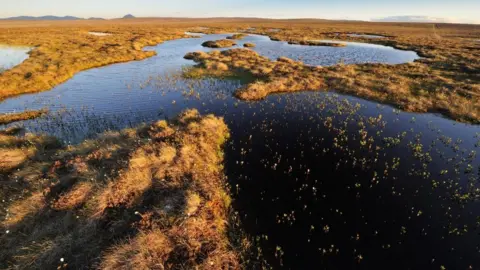Community feedback sought on Flow Country Unesco status
 Lorne Gill/SNH
Lorne Gill/SNHA public consultation is to be held on plans to secure Unesco World Heritage status for Europe's biggest blanket bog.
The area, called the Flow Country, stretches across Caithness and Sutherland.
The 494,210-acre (200,000ha) expanse of peatbog, lochs and bog pools is more than twice the size of Orkney.
The Peatlands Partnership will start its consultation on 14 May with a drop-in event in Wick.
Further events will be held in Caithness and Sutherland through to 30 May.
Details on the sessions are available on the project's website.

What is the Flow Country?
 Lorne Gill/SNH
Lorne Gill/SNH- Bogs in the tundra-like landscape have been growing since the end of the last Ice Age more than 10,000 years ago
- The area's peat is up to 10m (33ft) deep
- Its soil stores about 100 million tonnes of carbon
- People live and work in the Flow Country and its communities include tiny Forsinard
- Wildlife found in the area include otters, deer and common scoter ducks. In the UK, common scoters breed at only a few locations in the Flow Country and lochs in the hills and glens near Inverness

Six of the UK's 31 World Heritage sites are in Scotland.
They are the Antonine Wall, Heart of Neolithic Orkney, New Lanark, the Old and New Towns of Edinburgh, St Kilda and the Forth Bridge.
A wide range of organisations are involved in the Peatland Partnership, including Scottish Natural Heritage, University of Highlands and Islands (UHI), Highlands and Islands Enterprise, Highland Council, RSPB Scotland and the Federation of Small Businesses.
Project co-ordinator Joe Perry said: "A Flow Country World Heritage Site would not only be an enormous accolade for the area and the many organisations, land managers, crofters and farmers who have maintained this land for generations, but it could also bring many positive development opportunities and undoubtedly some challenges too.
"The purpose of the consultation is to find out what our local communities think about this idea and to see if we can help meet some of their aspirations through developing a World Heritage Site that meets their needs as well as recognising the global importance of this vast peatland."
